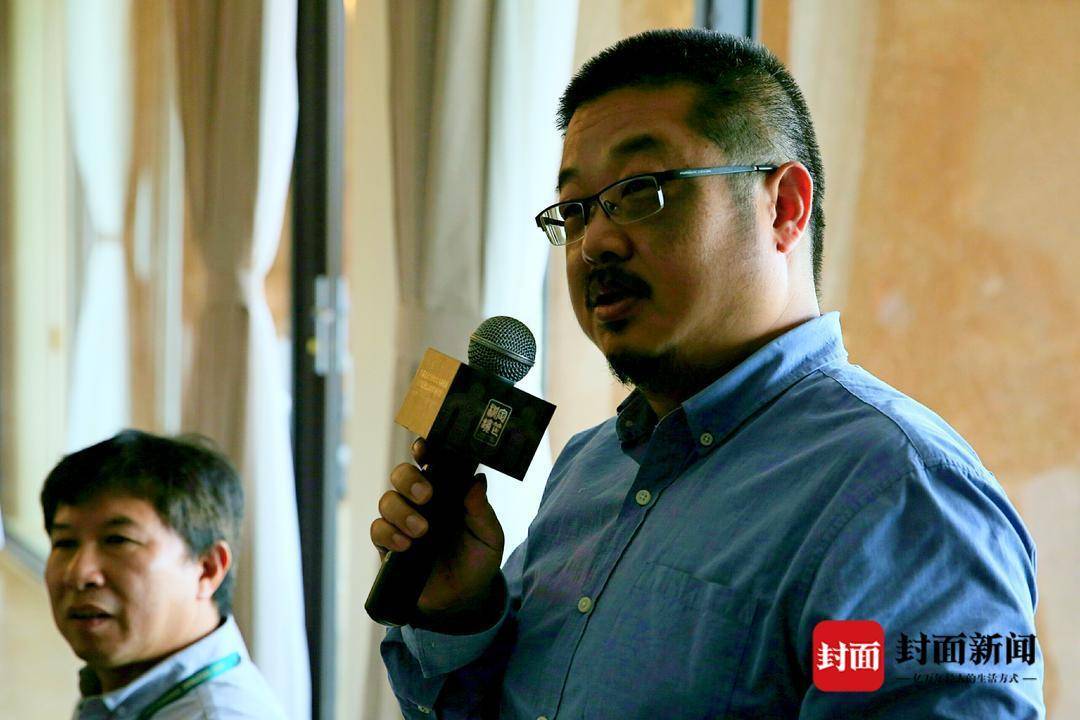When we talk about culture, what are we talking about?
Author:China Social Sciences Network Time:2022.06.22
"Culture" is a collective concept. No matter how we define culture, culture is always associated with a specific group rather than a single individual. The core of culture lies in the formation and use of meaning, that is, culture itself revolves around meaning. Although the meaning of "meaning" itself is complicated, we might as well understand meaning as a "statement" or "story". The carrier of culture is diverse. From the perspective of its essential characteristics, culture can be regarded as a collective significance of collective significance equipped with multiple types of carrons. This may be the object we talk about when talking about culture.
In many concepts of sociology, none of them may be familiar and unfamiliar like "culture". Saying that it is familiar because in an academic context or in daily life context, we will use this concept; say it is strange, because culture seems to be omnipotent, everywhere, and sometimes sometimes sometimes sometimes We cannot grasp its core connotation. This familiar and unfamiliar feeling makes us often feel difficult to talk about what is talking about when talking about culture.
"Culture": a collective concept
One of the important reasons why the concept of "culture" appears is that the word "culture" has a strong connotation ductility. Different scholars often attach specific meanings in this concept for their own academic preferences. If so, after the "dressing" of different scholars, the concept of "culture" is beyond recognition, which is elusive (the same situation also occurs in the concept of "capital"). Therefore, in order to better grasp the connotation of culture and make us talk about culture, we can tell the audience what to talk about. We seem to be necessary to return to the original origin of "culture" to see what the inherent characteristics it itself has Essence
"Culture" is a collective concept. No matter how we define culture, culture is always associated with a specific group rather than a single individual. In this sense, culture should be regarded as a social facts in the sense of Thalgan. However, the collective range of this social facts can be large or small, which gives different social functions. On the one hand, if the collective nature of culture involves all members of the entire society (such as Chinese culture), then at this time, as a collective construction, culture has the "anti -structure" nature in Turner. In other words, everyone is "equal" in the face of such a culture. Those social backgrounds (such as class and income) that distinguish between individuals have nothing to do with whether they accept such a culture. Culture has become an important resource for unity of members of society. On the other hand, if the collectiveness of culture is consistent with the existing individual social separation (such as class), then the culture itself has become a "soft" label that distinguishes individuals, or different group members are used to seek Intermediaries of field interests (cultural capital in Budier's sense). At this time, culture has become an important dimension of "structured" individuals in the sense of Turner. It can be seen that when we say that culture is a collective phenomenon, we need to consider how big this collective range is.
It should be noted that we say that culture is collective, and it does not mean that cultural research can ignore individuals. On the contrary, because of their different situations, individuals cannot understand the same collective culture. If we raise the culture high and regard it as a collective construction of the individual and the individual's passive acceptance and internalization, and ignore the heterogeneousness of the individual in it, then we will unconsciously fall into the culture The predicament of the decisive theory will make the corresponding cultural analysis make people feel itching between boots (for example, simplifying that individuals from English countries speak English). The reason for this is that the analysis framework we use is too thick lines, and we cannot grasp the cultural details in real life. In this sense, the collectivity of culture should be similar to the similarity of the characteristics of the individual level characteristics, not the top -down unified camera.
Culture around the meaning
The core of culture lies in the formation and use of meaning, that is, culture itself revolves around meaning. Although the meaning of "meaning" itself is complicated, we might as well understand meaning as a "statement" or "story". Because of this statement and story, specific people, things, and things are given a attribute that is different from physical reality. For example, unearthed cultural relics have cultural value because these cultural relics themselves are linked with historical traditions. Based on the historic "statement" or "story", the bottles and cans excavated from underground are no longer just specific things, but "text" objects. It can be seen from this example that cultural analysis is a process of exploring and mining meaning. In this process, cultural significance can be achieved by specific rituals (such as square dance), or can be achieved by specific symbols (such as money symbols), which is different. But it is important to emphasize that the ritual or symbols, the reason why it is important is not because of their own physical attributes, but because they are a medium to present cultural significance. For example, a story can be read by text or spread through the way of verbal teaching, but text and words are not the point itself, the focus is always the story.
Culture is related to meaning, and the way of meaning can be used in various ways. The traditional cultural and sociological research of phenomenology claims that cultural acceptance is a kind of internalization of socialization. Through this process, culture has obtained a "granted" and unquestionable attribute. At this time, people's use of cultural significance is a natural process, and it does not even need to be reflected (for example, individuals who believe in filial piety will "automatically" take care of elderly parents, and will not reflect on the personal gains and losses). However, the theory of cultural toolboxes believes that individuals can take the initiative to choose and call culture to rationalize their own behavior. According to the idea of "toolbox", the cultural significance has changed from an object of "passive" to the object of "active" use. Based on different perspectives, the call for cultural significance involves diversified cognition, which can be implemented in a way of automated cognition, or a way of reflective cognition. In other words, the cultural significance shows the "fast" and "slowness" in the sense of Kanmann. Pay attention to cultural diversified carriers
Finally, the carrier of culture is diverse. Culture shows its reality in social life, provided that it is attached to a specific carrier. In fact, many social science cultural research is strictly the research on cultural carriers. The discussion of cultural carriers is also related to the problem of cultural measurement, that is, how we implement the abstract cultural concept to the experience level and make it "touch".
In the existing cultural sociology research, there are three basic ways to discuss the carrier of culture. The first is to measure culture through individuals, through individual recognition of specific values, or the degree of fit between individual external actions and specific culture. This measurement path can be said to be a research strategy adopted by most large -scale social surveys (such as world values). However, the disadvantage of this measurement strategy is that the attitude that people clearly stated when answering the questionnaire question are still room for further discussion. In response to some issues (such as relatively sensitive issues involving discrimination), the research objects may choose those "standard answers" because of social expectations. Therefore, the recent cultural measurement has begun to use psychological analysis methods to examine the cultural tendency of people under the subconscious. The second is the objective carrier of culture. This is typical in the study of cultural products (such as research on popular songs). In such research strategies, the significance of culture lies in how people think and understand the cultural significance behind an external objective carrier. But this type of cultural carrier is often limited to a specific field. For example, the discussion of art is often in the field of art, and the discussion of literary creation is mainly concentrated in the field of literature. Although researchers in such directions usually try to surpass specific fields for higher -level theoretical abstraction, because the experience and cultural carriers have been fixed, these cross -field theories explore more. Foundation of experience. The third is based on the relationship between specific analysis objects. This is typical to analyze the cultural characteristics within a group by examining individual social network characteristics (such as centrality and other indicators). At this time, the carrier of the culture is the network structure. Therefore, it has changed people's network structure and indirectly changed the culture that exists in this network. It should be noted that the carrier culture is also applicable to narrative analysis. In quantitative narrative research, the narrative content is simplified into the relationship between different narrative objects, and the network diagram structure is presented to explore the theme of specific narratives and the cultural significance behind it.
Based on the above discussion, from the perspective of its essential characteristics, culture can be regarded as a collective significance of the collective significance equipped with multiple types of carrier. This may be the object we talk about when talking about culture.
(This article is the major project of the National Social Science Foundation "The Research on Path and Mechanism of the Creative Transformation and Innovative Development of the Outstanding Traditional Culture of China" (22ZDA081) phased achievement)
(Author unit: Department of Sociology, Social Development and Public Policy of Fudan University)
Source: China Social Science Network-Journal of Social Sciences of China
Author: Hu Anning
- END -
Yang Yong, a researcher at the Institute of Archeology of the Chinese Academy of Social Sciences: The bronze bell unearthed from the Yunnan -Guizhou Plateau is a symbol of power

Yang Yong, a researcher at the Institute of Archeology, Chinese Academy of Social ...
10 classic famous sentences in "Walden Lake": good is the investment that will never lose money

01Knowing what you know and knowing what you don't know is the real knowledge.02I ...